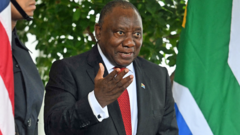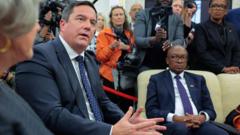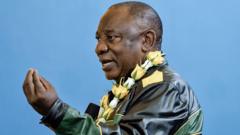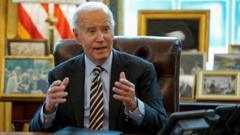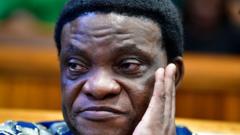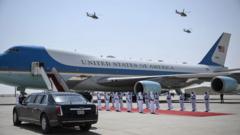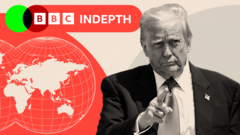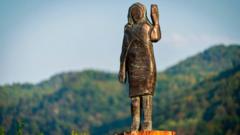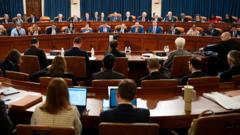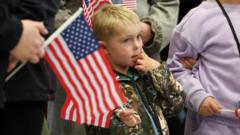In a recent White House meeting, President Trump faced backlash for promoting unfounded theories regarding racial persecution in South Africa, disregarding the context provided by President Cyril Ramaphosa.
Trump's Controversial Claims During Meeting with South African President

Trump's Controversial Claims During Meeting with South African President
Trump presents misleading evidence on racial issues, prompting Ramaphosa's concerns.
During a significant meeting at the White House, President Donald Trump took the opportunity to deliver a lecture to South African President Cyril Ramaphosa, showcasing a video and several documents that he claimed demonstrated racial persecution of white South Africans. This meeting has drawn attention for Trump’s history of propagating erroneous claims about land seizures and violence against Afrikaners, which are widely considered to lack substantive evidence.
As President Ramaphosa looked on, visibly taken aback, Trump repeatedly highlighted phrases like “Death, death, death,” while sifting through his papers. Ramaphosa attempted to assert his perspective on South Africa's current situation, disputing the authenticity of the video presented, arguing that the depicted locations were unfamiliar to him.
White House reporter Zolan Kanno-Youngs pointed out that this event illustrated a rare instance of a world leader striving to correct Trump’s narrative, yet the U.S. President continued to amplify fringe theories instead. It is important to note that while there have been violent incidents involving white South Africans, police data indicates that their murder rates are not disproportionately higher compared to other South African demographics.
The context of this meeting is further complicated by recent U.S. policies that now favor the immigration of white South Africans, having put refugee programs for other groups on hold. Analysts suggest that Trump's administration's critical stance towards South Africa’s government is influenced by multiple factors and political strategies, marking this interaction as emblematic of broader international tensions.
As President Ramaphosa looked on, visibly taken aback, Trump repeatedly highlighted phrases like “Death, death, death,” while sifting through his papers. Ramaphosa attempted to assert his perspective on South Africa's current situation, disputing the authenticity of the video presented, arguing that the depicted locations were unfamiliar to him.
White House reporter Zolan Kanno-Youngs pointed out that this event illustrated a rare instance of a world leader striving to correct Trump’s narrative, yet the U.S. President continued to amplify fringe theories instead. It is important to note that while there have been violent incidents involving white South Africans, police data indicates that their murder rates are not disproportionately higher compared to other South African demographics.
The context of this meeting is further complicated by recent U.S. policies that now favor the immigration of white South Africans, having put refugee programs for other groups on hold. Analysts suggest that Trump's administration's critical stance towards South Africa’s government is influenced by multiple factors and political strategies, marking this interaction as emblematic of broader international tensions.



